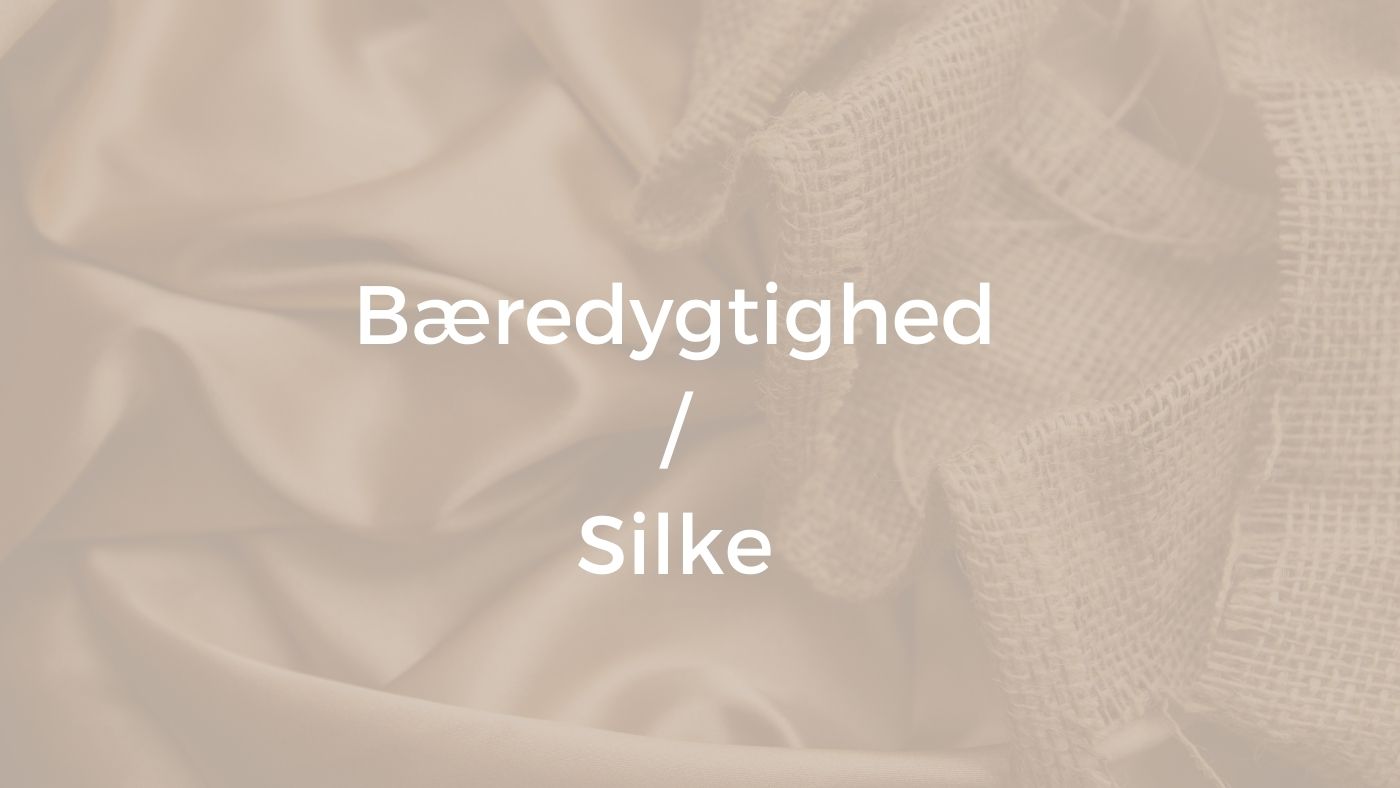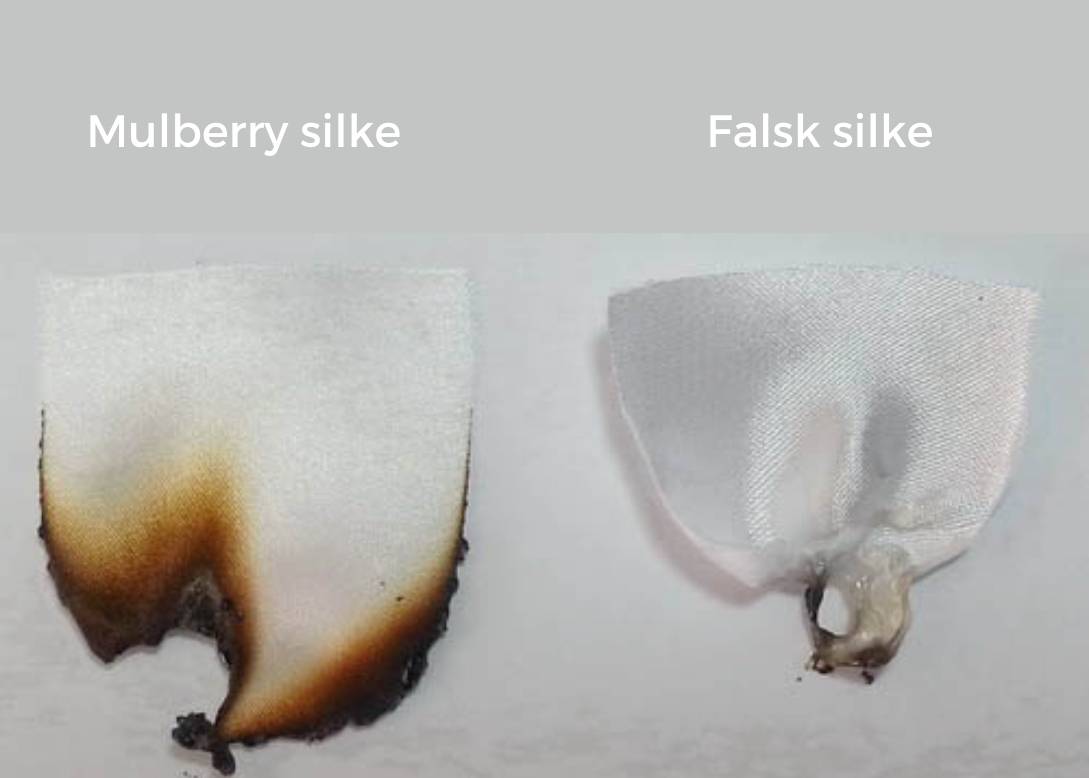Spot the difference – Real silk vs. fake silk
Six easy ways to tell the difference between real silk and fake silk
At Cillouettes, we exclusively sell the best quality silk, and we have everything from silk bedding to silk scrunchies. We place great importance on informing our customers about the benefits of sleeping on genuine silk, as well as how to get the best value for money when buying silk bedding and accessories. Unfortunately, there is a tendency for the quality of silk to be graded in some contexts. The average consumer probably does not know how to tell if silk bedding or accessories are genuine - something many exploit to sell fake or low-quality silk as the real thing.
That's why we at Cillouettes have written this guide, so you can tell the difference between real and fake silk.

Six tips for genuine silk
1. Read the product description carefully
The first thing you should pay attention to when buying silk - especially online - is to read the product description. Be especially careful when you see phrases like "silky soft" and "soft as silk", as these are often used to describe qualities like polyester or cotton. Mulberry silk is the purest form of silk available, so we recommend that you go for this. Additionally, you should watch for whether the product description specifies the silk quality (1A - 6A) and the weight (momme).
General tip: If you don't see the word MOMME, then it is not quality silk.
2. Silk materials look different than satin
What does silk look like, and how does it differ from satin? This question is frequently asked, and we understand you. It can be hard to see with the naked eye, but there is a difference. Silk is known for its luster, which is especially reflected in light. Synthetic materials cannot replicate this appearance, as they tend to shimmer more than shine.
Genuine silk is always shiny and never glittery. Fake silk is glittery and not shiny.
3. Silk feels different than satin
Both silk and satin are "smooth" on the front. Satin tends to be smoother compared to silk. The back of polyester satin will feel "harder" and look like plastic. This is the opposite of silk, which appears soft and with a matte finish.
All Cillouettes products are made with a "charmeuse weave", which is smooth and shiny on the front and matte on the back. Fake silk, on the other hand, will feel smooth on the front and plastic-like on the back.
4. Read the label carefully
Genuine, natural silk will always be labeled. Look for terms like 100% silk or 100% mulberry or morus silk. The label can often even specify the specific quality of silk and its momme weight, which corresponds to the thread count. (Read about momme weight here).
Artificial silk can be identified by terms like "silky", "silk satin" or "satin weave". However, you should naturally be cautious if you see terms like "synthetic", "polyester" or "artificial". Here you can be sure that it is fake silk.
5. Look for OEKO-TEX certificates
With OEKO-TEX or other independent product safety certifications, you can protect yourself against toxic chemicals. Generally, silk is a natural hypoallergenic material and therefore does not irritate even the most sensitive skin. Fake silk is often not certified with OEKO-TEX® certification, so one indicator can be to look for certification against the use of toxic substances. You can see if the product is certified either on the product's label or via the company's website.
6. Be aware of the price of silk
When it comes to silk, you get what you pay for, but of course you should never pay too much. Silk - even genuine silk - comes in a range of different price brackets. We recommend that you compare prices from a number of reputable silk companies. A good rule of thumb is that silk pillowcases in 50x50 cm should cost at least $30 (200 DKK). If the price is below this, it is likely a fake silk material or a cheap blend.
At Cillouettes, we are very transparent about the factors involved in pricing our silk. The most important factors include weight (momme), weaving, and the quality of the silk.
|
Genuine 100% Mulberry Silk |
Synthetic fabric or blended product | |
| Product description | 100% Mulberry Silk | Misleading "Silky" or "Silk feel" |
| Appearance | Shiny | Glittering |
| Feel | Soft/Smooth | Smooth |
| Label | Will say "Mulberry Silk" | No label |
| Safety | OEKO-TEX certification | No certification |
| Price | Price per meter of silk 100-150 DKK | 100-200 DKK per pillowcase |
Additionally, there is the fire test for silk. You can read about it here, so you can learn to distinguish silk.


